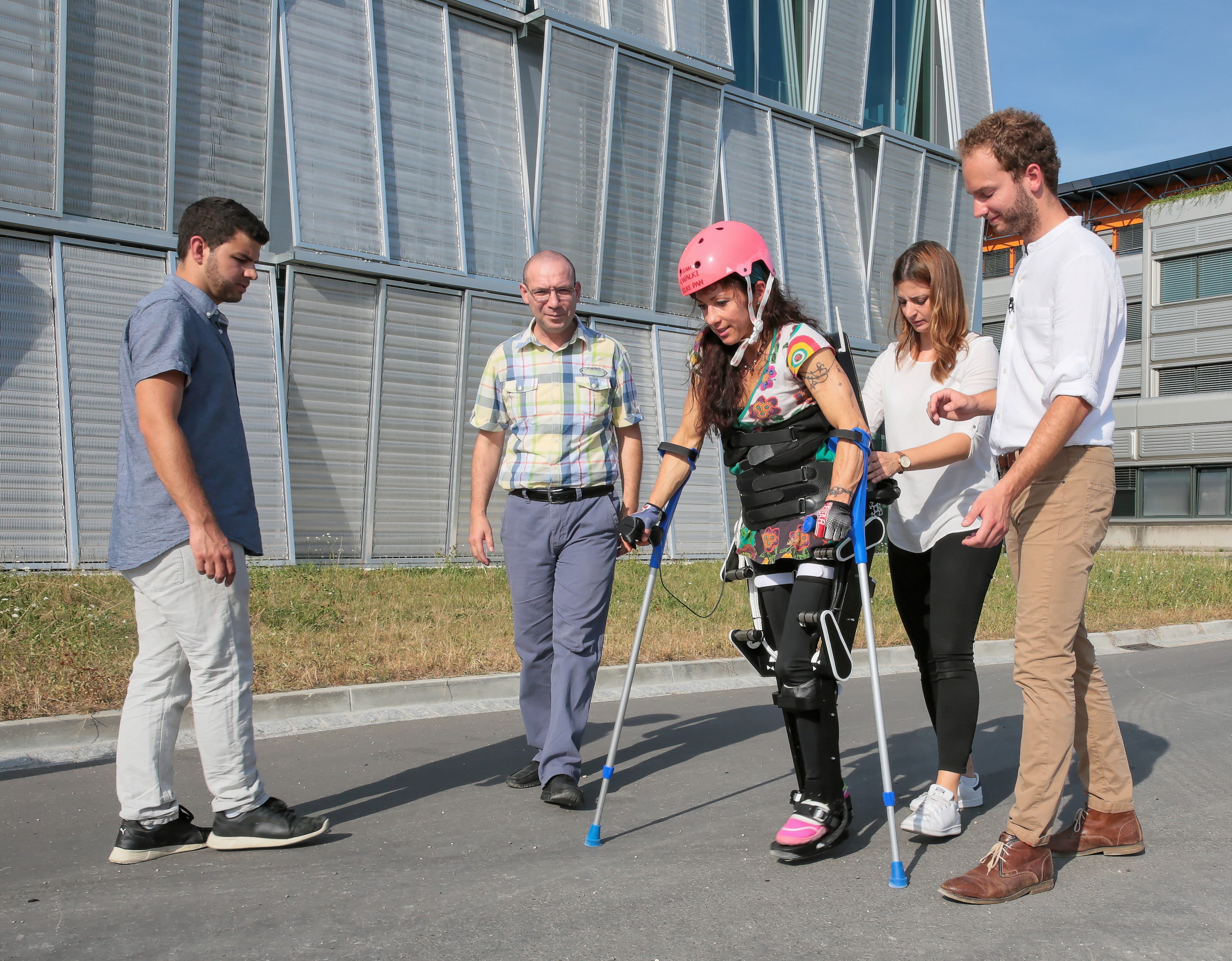
The first prototype of TWIICE in 2016
Project origin
The development of a modular exoskeleton for walking assistance, originally meant for children and adults of short stature, began in February 2015 at the Laboratoire de Systèmes Robotiques (LSRO) at EPFL. Only a year and a half later, the technological development of the device is sufficiently operational and secure to carry out the first tests with a test pilot.
A step towards autonomy and mobility
TWIICE allows its users to regain autonomy in daily activities: sitting and standing, walking on even and uneven ground, on flat and inclined surfaces. The intention of the designers is also to give (back) its users some of the sensations associated with walking or simply standing.
Modular, powerful, and light
A single exoskeleton alone will not be able to meet all expectations, as each handicap is unique: there is a need to design a modular and customizable product. With a weight of 15 kg and an autonomy of 3 hours, this exoskeleton aims to respond to different pathologies, morphologies and user experiences. Its technical design is based on the aspiration towards simplicity, which gives the tool robustness, reliability and lightness.
